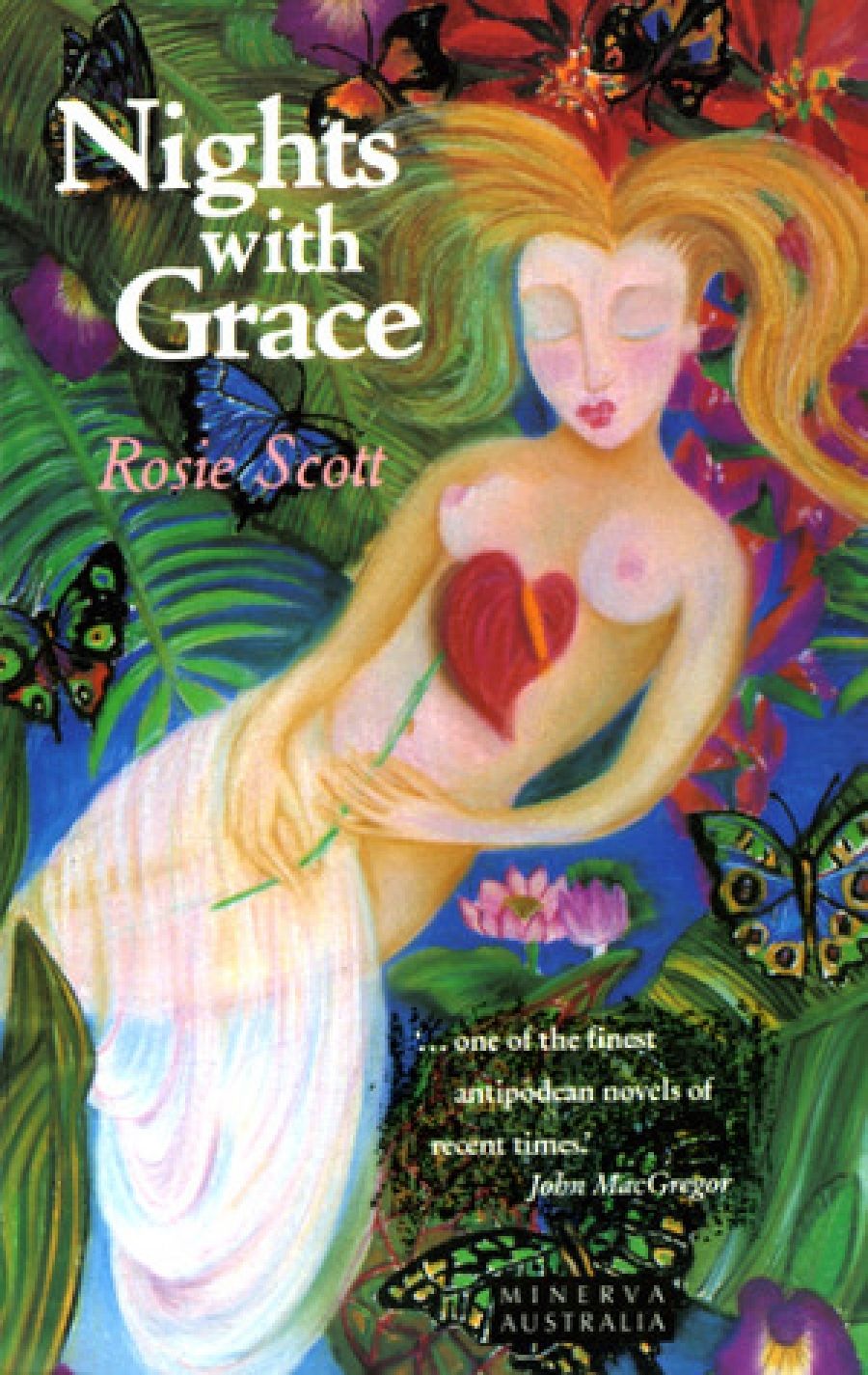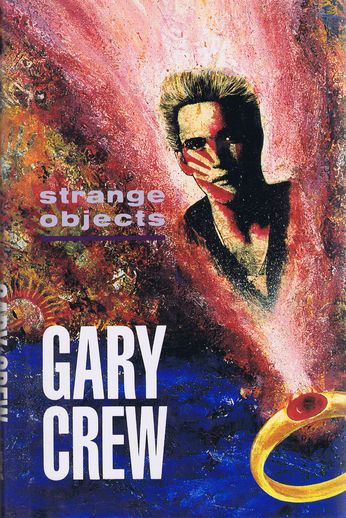
- Free Article: No
- Contents Category: Fiction
- Review Article: Yes
- Online Only: No
- Custom Highlight Text:
My acid test of a good novel is how long the characters reverberate in the consciousness after the book has been put down. After I read both these books, I carried Grace Starr and Steven Messenger around in my head for weeks – both of them dangerous and mysterious persons, but in very different ways.
- Book 1 Title: Nights with Grace
- Book 1 Biblio: William Heinemann Australia, 130 pp, $24.95 hb
- Book 2 Title: Strange Objects
- Book 2 Biblio: William Heinemann Australia, 85 pp, $24.95 hb
- Book 2 Cover Small (400 x 600):

- Book 2 Cover (800 x 1200):

- Book 2 Cover Path (no longer required): images/1_Meta/April_2020/143328.jpg
- Book 2 Readings Link: booktopia.kh4ffx.net/4b9XZ
And what a history! Grace has had a peculiar lackadaisical upbringing, shielding her eccentric and profligate mother in someone’s abandoned house (shades of Maugham and Greene haunt the rotting verandah), working in Porora and Joe’s dilapidated beachside bar, serving drinks to beer-sodden expatriates dreaming of the pristine suburban safety of an idealised New Zealand she has never seen. All this forms the background to her love affair with the Kiwi Jack, come to the island to spread the Greenpeace gospel and warn of the effects of the pesticides given out by a ‘benevolent’ patriarchal New Zealand government, which is at the same time desecrating the tapu burial place of Porora’s ancestors in the name of progress.
The dichotomies Scott sets up between Rarotongan spiritualism and Papa’a capitalism, between native values and an invading culture of ‘plastic Reeboks’, between Grace’s desires and her dignity, propel the plot towards a confrontation in which Grace proves her integrity and adulthood, becoming the ‘witch’ to whom people come to find lost things – in this case, a lost autonomy and self-assertion. As the embodiment of two cultures, Grace blends the strengths of two survivors – her mother Mara, to whose window flocks of men are still drawn, and Porora, the Rarotongan matriarch of immovable morality and will. That Grace, Jack, Mara and Raoul, Joe and Porora become real and compelling personalities rather than metaphors for opposing forces is a tribute to the sensual magic of Scott’s writing, suggesting her ear for dialogue, her wit and boldness in describing the voyage into an unknown territory of self, her understanding of dreaming and sex, that which is ugly and beautiful, feared and desired. Grace is a person whose acquaintance is to be sought, and whose future remains of interest and concern to the reader.
Gary Crew’s novel Strange Objects shares certain themes with Scott’s book – an adolescent protagonist seeking enlightenment, a passage towards initiation into the unknown – but Crew exercises his imagination more in the manner of Poe. The tale has all the time-honoured elements of a good frightener: long-lost documents, human remains, hints of cannibalism. And yet it is lifted well above the hackneyed by its complexity of plot and structure.
Steven Messenger, aged sixteen, makes a gruesome discovery on a school trip. In a sea-cave, an iron pot is unearthed. Inside are a leather-bound diary and a mummified human hand. The story of Messenger's involvement with these relics of a seventeenth century Dutch shipwreck is told in the form of a collection of papers: press-clippings, translations of the diary of a castaway murderer, reports by a distinguished maritime archaeologist, and letters written by the boy himself before his ultimate disappearance. Crew weaves a web of carefully researched data – on Dutch and Australian history, on Aboriginal legend and custom, on the precise history of the wreck of the Batavia in 1629 – through which a malevolently expectant Lovecraftian creature can dimly be discerned. The shape behind the facts is like the pattern on a jigsaw puzzle – one that you don't much want to look at once you've assembled all the pieces.
Messenger's gradual mental decline – or metamorphosis – is the focus of the mystery. As each piece of the puzzle fits together, the reader's fear and suspicion increases. What is the link between Messenger and Jan Pelgrom, the murderous child who originally owned the ring stolen from the mummy hand? What is the link between Messenger's neighbour, Nigel Kratzman, and the diarist Wouter Loos? Crew creates strange affinities between the worlds of then and now, building the tension meticulously on his bedrock of fact and his superstructure of characterisation. Dr Hope Michaels, Sgt Norman, Charlie Sunrise the Aboriginal elder, Kratzman the car freak, are as real as anyone we read about in the daily papers; Messenger, the loner, is something else entirely. Revealing his increasing arrogance, violence, racism and cunning through the medium of his own words, the boy assumes a chilling inhumanity.
But Crew makes the reader work hard. There is no easy definition of 'goodie' and 'baddie', fact or fiction. In Steven Messenger's dreamworld, past and present blur. He has visions of a doppelganger outside his bedroom window, visions of blood on the highway outside the truckstop where he lives, out-of-body experiences on the cliff-top overlooking the sea, where he witnesses a 300-year-old event. Crew even introduces hints about children being stolen away into his games with the reader. The town where Steven goes to school is called Hamelin, and there is a local legend about a maniacal hitchhiker who stalks the desert highway. Making sense of this richness of allusion and trying to separate threads of imagination and reality in the edifice Crew has constructed on his barren Australian landscape is a satisfying intellectual exercise that will continue to tease and perplex readers of all ages long after the book has been read.


Comments powered by CComment